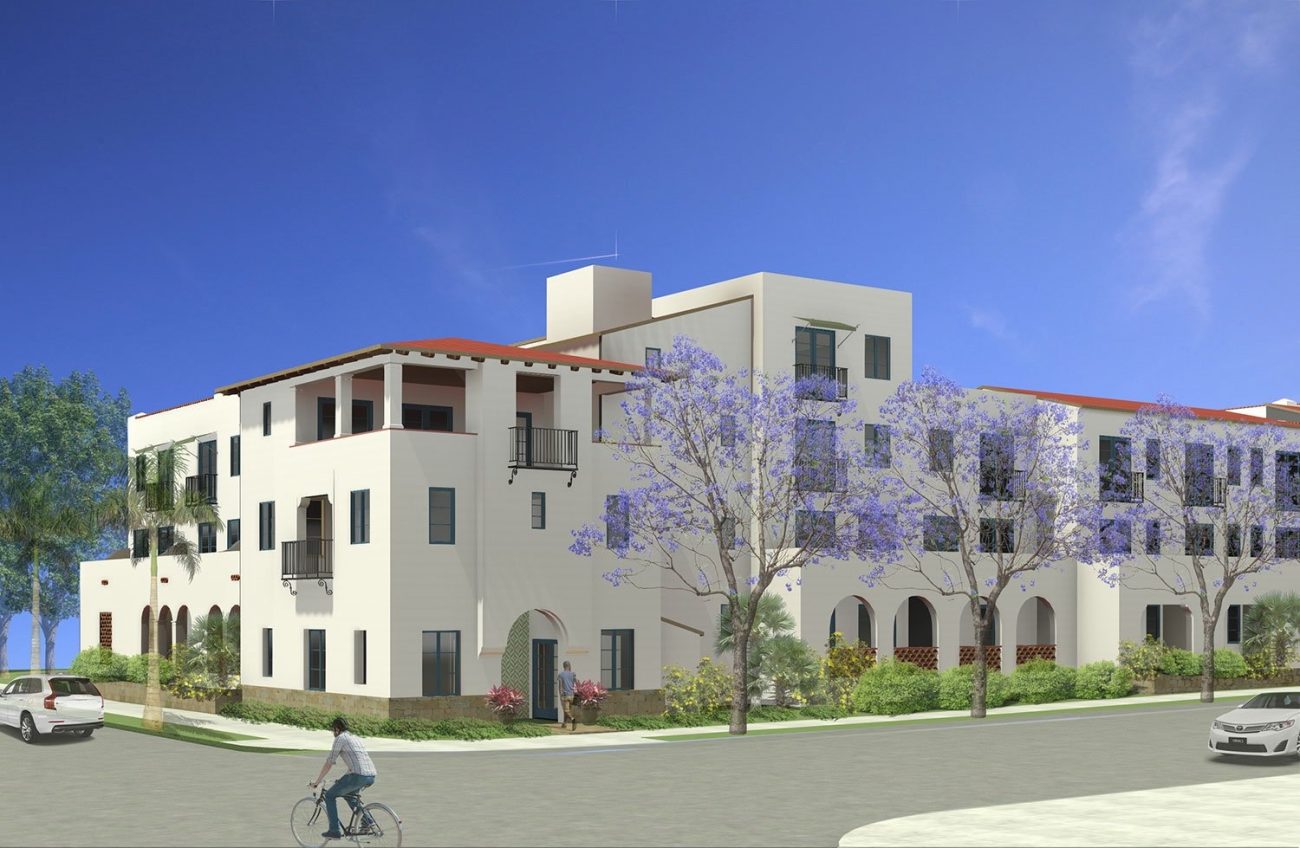
Santa Barbara City Council ‘Beyond Thrilled’ with Affordable Housing Project Proposed for Carrillo-Castillo Commuter Lot
Council Unanimously Agrees to Let City’s Housing Authority Build 63 Rental Units Targeting the ‘Missing Middle’

Tue Sep 26, 2023 | 5:08pm
Five years after neighbors exploded over plans to create a tiny-home village on the city-owned Carrillo-Castillo Commuter Lot, the Santa Barbara City Council on Tuesday enthusiastically and unanimously approved a Development Agreement allowing the Housing Authority to build 63 affordable rental units targeting moderate- and middle-income earners instead. In the intervening years, the site has become an expanding haven for those living in their campers or RVs. But just one week before the council’s vote, that parking lot was cleared of all resident motor-vehicle dwellers “to address deteriorating and unsanitary conditions.”
The new development — dubbed Jacaranda Court for the thick canopy of jacaranda trees there now — will provide deed-restricted “affordable” rental housing targeting renters who make enough to qualify as either middle- or moderate-income earners. Translated, this means two-person households making anywhere from $94,000 to $137,0000 — Santa Barbara’s so-called “missing middle” — can qualify for the new units. Traditionally, most laws and programs designed to subsidize the development of affordable housing target only low- and very-low-income earners.
For moderate-income individuals, a Jacaranda Court studio will rent for $1,600 and a two-bedroom unit for $2,200. For middle-income individuals, studios will fetch $2,535 and two-bedrooms $3,244.
Seven of the 63 units will be set aside for low-income tenants. In Santa Barbara, for purposes of housing designations, “low-income” is defined as a family of four that makes less than $94,000.
The mix between moderate- and middle-income occupants has yet to be determined and will depend largely on construction costs and whether they allow a 5 percent rate of return for the as-yet unnamed investor, whose restraint when it came to rate of return was roundly praised as both philanthropic and altruistic. Five percent is less than half of what a financially motivated developer would require.
To make this deal happen, City Hall not only kicked in the real estate but also allowed housing density bonuses that the developers could not have gotten even under the most aggressive state law to incentivize affordable housing. In addition, City Hall allowed the four-story project to exceed the city’s 45-foot height limit by 18 inches, gave the developers a substantial break in terms of yard space, and allowed the project to encroach 8-10 feet into required creek set-back protections.
Furthermore, City Hall allowed the developers to pursue what for Santa Barbara remains an experimental approach to parking. The Housing Authority will be allowed to provide what’s known as “unbundled parking.” Translated, that means, tenants without cars can pay less, and those with cars will pay separately for their space.
The extreme gyrations required to help create rental housing that’s affordable to people making what would be considered a better-than-decent living most anywhere else underscores the severity of the South Coast’s housing crisis.
“I’m beyond thrilled to be at this moment,” exclaimed Councilmember Meagan Harmon, who represents the district in which this project will be located. For many residents of the immediate neighborhood, Harmon said, this is exactly the sort of project that’s urgently needed.
Councilmember Michael Jordan suggested that the project could have been significantly bigger. Initially, the Housing Authority had proposed 103 units, but came down based on feedback from neighbors concerned about the size and competition for on-street parking that would ensue.
Jordan took pains to praise the project’s anonymous angel investor, urging him or her to “take a bow” at some point. “We need to recognize and acknowledge that type of person,” he said.
Councilmember Eric Friedman was no less gushing. When people ask him, “‘What is the council doing in terms of the housing crisis?’ I can point to this project,” he said.
Councilmember Kristen Sneddon chimed in with, “This project is exactly what we need,” and Councilmember Alejandra Gutierrez expressed her excitement about the proposed development but cautioned that as affordable as it was, many residents in her Eastside district still don’t make enough to qualify for the payments. Santa Barbara, she said, has been slow in responding to the housing crisis.
“Change is always hard,” Gutierrez said.
Left unstated is what becomes of the people living on the site in their vehicles. According to Bryan Latchford with the City Administrator’s Office, occupants of around 21 RVs and campers called this lot home. These were unpermitted. Another two were permitted through the Safe Parking Program run by New Beginnings, but according to Latchford, they had been effectively crowded out by the growing number of unpermitted vehicle occupants.
Even Neighborhood Navigation Centers — which operated at the site for several years, connecting those in need with services and with on-site showers provided by Showers of Blessing — felt the pinch on the site. They both will be relocated elsewhere at least for the next two weeks. After that, their destiny is uncertain. Many expect some of the unpermitted prior residents to relocate to Hope Avenue or other locations where there’s been an accumulation of RVs and campers.
The game of whack-a-mole traditionally played by City Hall with such vehicle dwellers got significantly more complicated as of this May with the settlement of a legal challenge to the city’s oversized vehicle ordinance filed by the Committee for Social Justice, which alleged the ordinance was designed to discriminate against people experiencing homelessness. While the ordinance managed to survive the challenge, it did so with so many conditions negotiated into the agreement as to render it exceptionally cumbersome to enforce.
Under the terms of the settlement, a two-hour notice must be issued before a citation can be issued; if in that time the occupants move at least 1,000 feet, a new notice must be issued. Upon the first offense, a three-day grace period is required to allow the occupants to apply to become permitted as part of New Beginning’s Safe Parking program.
As for Jacaranda Court, the next step is to determine final construction costs. From there, the investor and Housing Authority will determine the mix of moderate- and middle-income units. After that, they will secure the necessary building permits and begin construction.
